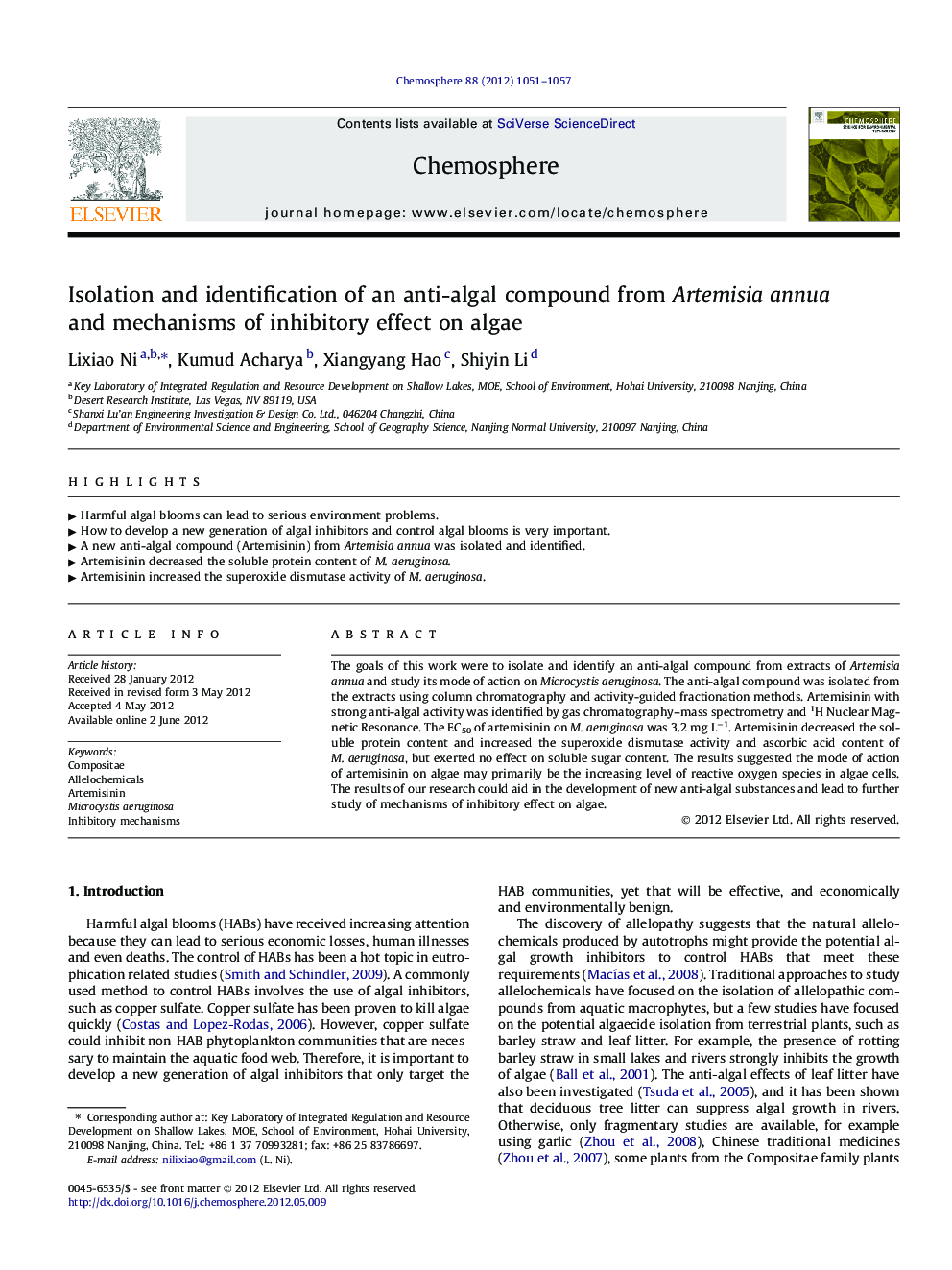| Article ID | Journal | Published Year | Pages | File Type |
|---|---|---|---|---|
| 4409620 | Chemosphere | 2012 | 7 Pages |
The goals of this work were to isolate and identify an anti-algal compound from extracts of Artemisia annua and study its mode of action on Microcystis aeruginosa. The anti-algal compound was isolated from the extracts using column chromatography and activity-guided fractionation methods. Artemisinin with strong anti-algal activity was identified by gas chromatography–mass spectrometry and 1H Nuclear Magnetic Resonance. The EC50 of artemisinin on M. aeruginosa was 3.2 mg L−1. Artemisinin decreased the soluble protein content and increased the superoxide dismutase activity and ascorbic acid content of M. aeruginosa, but exerted no effect on soluble sugar content. The results suggested the mode of action of artemisinin on algae may primarily be the increasing level of reactive oxygen species in algae cells. The results of our research could aid in the development of new anti-algal substances and lead to further study of mechanisms of inhibitory effect on algae.
► Harmful algal blooms can lead to serious environment problems. ► How to develop a new generation of algal inhibitors and control algal blooms is very important. ► A new anti-algal compound (Artemisinin) from Artemisia annua was isolated and identified. ► Artemisinin decreased the soluble protein content of M. aeruginosa. ► Artemisinin increased the superoxide dismutase activity of M. aeruginosa.
